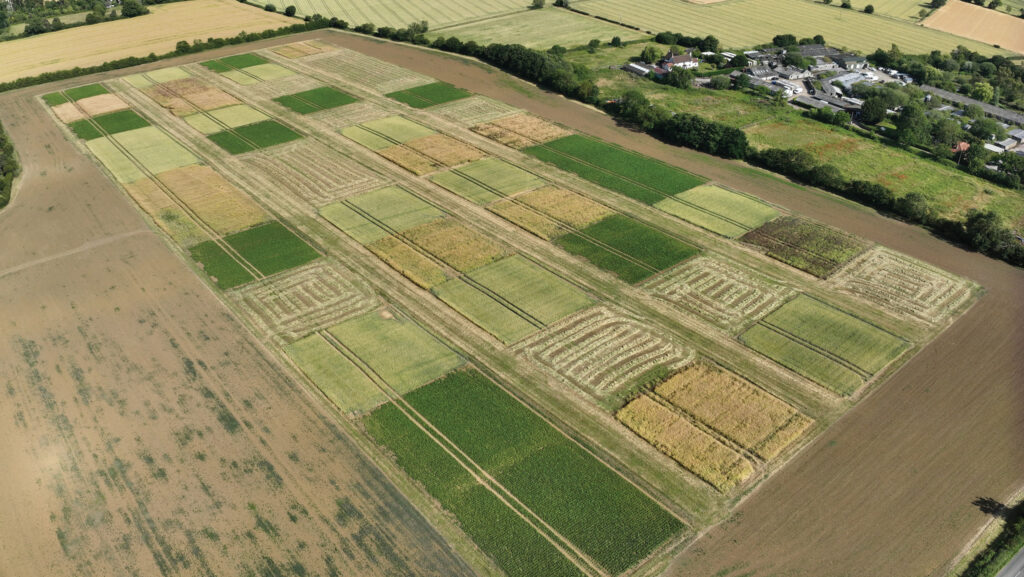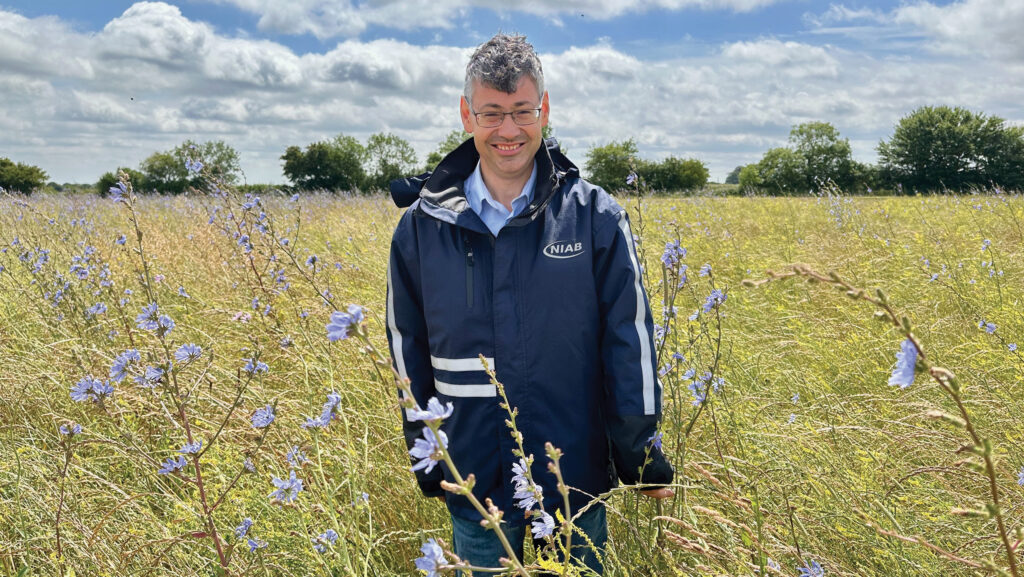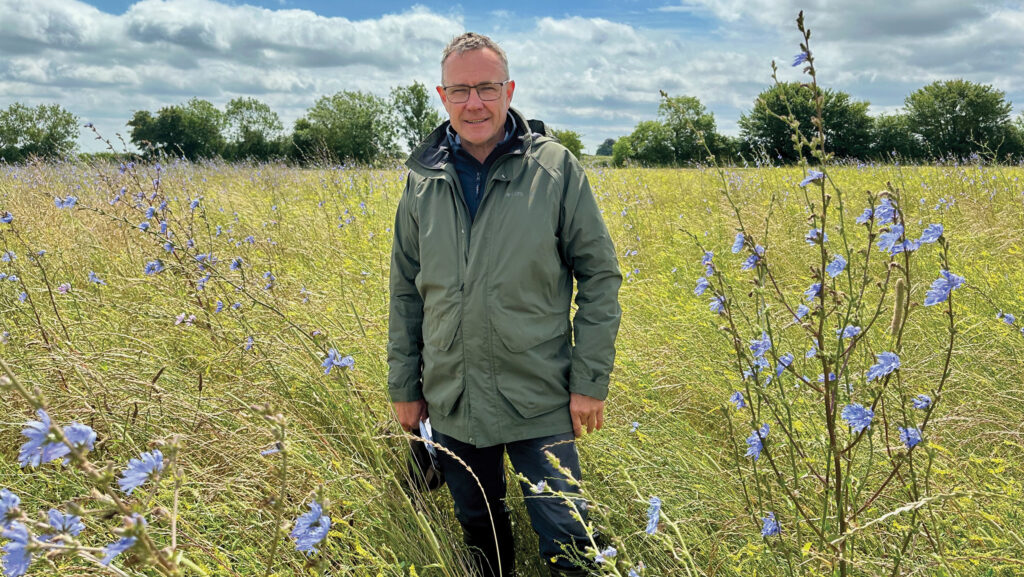Trial shows best break crops and cultivation for wheat profit
 Weather has a bigger influence on yield than
cultivation practice © Nathan Morris/Niab
Weather has a bigger influence on yield than
cultivation practice © Nathan Morris/Niab Discussion around which cultivation approach is best has been a central theme of many a pub debate or magazine article in recent years.
But 20 years of the long-term Sustainability Trial for Arable Rotations (Star) project, in Suffolk, suggests that at least for winter wheat, weather is a much more decisive influence on yield than cultivation practice.
See also: Long-term direct driller reveals yield impact of ploughing again
About the Star Project
The Star Project is funded by The Morley Agricultural Foundation and The Felix Thornley Cobbold Trust and, historically, The Chadacre Agricultural Trust and delivered through Niab in conjunction with an independent advisory group, and hosted at Stanaway Farm, Otley, Suffolk.
Four cultivation approaches are used in the 36x36m plot trials, which also feature four different rotations:
- Ploughing
- Deep non-inversion targeting 20cm depth using a Sumo Trio
- Shallow non-inversion targeting 10cm depth using the Trio discs with legs pulled up
- A managed approach where host farmer John Taylor decides what he would choose on the farm based on soil conditions and previous cropping. The techniques used have ranged from single pass approaches through to ploughing.
Each cultivation approach is used for each rotation creating a matrix of 16 different treatments, which are replicated three times within the field.
Perhaps most surprisingly, all four cultivation systems only differed by 0.15t/ha across the 10 years when winter wheat was grown in the same year across the four different rotations.
Rotations in Star project
- Winter cropping – winter wheat with winter-sown break crops (beans and OSR)
- Spring cropping – winter wheat with spring-sown break crops (beans, oats, linseed and sugar beet)
- Continuous winter wheat
- Alternative fallow and herbal ley – initially alternative winter wheat and fallow. Since 2016, two winter wheats followed by three years of herbal ley
Wheat yield seasonality

Nathan Morris © Mike Abram
In contrast, wheat yields vary by season by over 5t/ha, depending on conditions during the season.
“Wheat yields are very stable with regards to cultivations,” says project leader Dr Nathan Morris, Niab’s senior specialist for farming systems and soils.
“Where cultivations have a bigger impact is on break crops, and particularly on this heavier soil type, spring break crops, which are much more sensitive to cultivation system.”
In the rotation including spring cropping, yields in the plots using shallow cultivation drop to 91% of the plough-based system, while the deep cultivation option is at 95%.
In at least four years, since the project began, shallow cultivated spring break crops have performed poorly compared with other regimes, Nathan notes.
For example, shallow cultivated spring beans, following the challenging autumn in 2020, yielded just 1.06t/ha, much lower than the 2.54t/ha from ploughing.
Achieving consistent performance from pulses in rotations on this soil type is a challenge, even more so when using shallow cultivations, Nathan says.
John’s managed approach has matched the plough-based system for yields within the spring crop rotation, mostly opting for either ploughing or the deep cultivation system ahead of the spring break crops.
Shallow cultivation has been chosen twice – in 2019 and 2021 ahead of sugar beet and spring beans – although there’s a more even split of system ahead of wheat crops in that rotation.
In the winter cropping rotation, the managed approach has been less successful with yields falling 4% below the ploughed-based control baseline.
Two years of low yielding subcast winter oilseed rape is the main reason for dragging the average down, Nathan points out.
Cultivation flexibility
But overall that flexibility in choosing cultivation system based on weather, crop and local knowledge has paid off by achieving around 6% higher cumulative margins than the next best plough-based approach up until 2023.
The last year figures are currently available for, after weather put paid to the trial being established in 2023-24.
Growing a rotation only using winter cropping has given the best average annual gross margin at £679/ha, over £85/ha higher than a similar rotation with spring break crops.
Growing continuous wheat reduced annual gross margin by a further £20/ha.
Gross margins from the rotation now including herbal ley have yet to be calculated.
“There’s lots of detail in these averages. For example, where certain crops have failed in a given season because of the pest damage or poor establishment due to high rainfall, they have been excluded from these calculations,” Nathan says.
Average annual gross margin (2006-23) for different cultivation systems* in Star project |
|
|
Cultivation system |
Average annual gross margin |
|
Plough |
£617/ha |
|
Managed approach |
£652/ha |
|
Shallow tillage |
£595/ha |
|
Deep tillage |
£597/ha |
|
* Excludes herbal ley rotation |
|
Average annual gross margin (2006-23) for rotations* in Star project |
|
|
Rotation |
Average annual gross margin |
|
Winter cropping |
£679/ha |
|
Spring cropping |
£593/ha |
|
Continuous wheat |
£573/ha |
|
Herbal ley |
N/A |
|
*Gross margins for herbal ley rotation not available |
|
Average annual gross margins (2006-2023) for each combination of cultivaton and rotation |
|||
|
|
Average annual gross margin |
||
|
|
Winter cropping |
Spring cropping |
Continuous wheat |
|
Plough |
£711/ha |
£591/ha |
£549/ha |
|
Managed approach |
£696/ha |
£610/ha |
£648/ha |
|
Deep tillage |
£678/ha |
£595/ha |
£518/ha |
|
Shallow tillage |
£629/ha |
£576/ha |
£580/ha |
Why has continuous wheat underperformed?
Reduced grassweed control is one of the main reasons why continuous wheat yields and profitability suffered over the period of the Star project.
Grassweed populations in the rotations with spring and winter break crops have generally been kept in control, even in the shallow tillage cultivation system, says Niab’s Nathan Morris.
“Typically, we see the breakdown in weed control a few years after a poor crop – for example, after a thin crop of linseed.”
But the greatest pressure has been in the continuous wheat rotation, although it took longer to break down than expected.
Within that system, there has been nuance.
Ploughing has generally helped keep populations relatively in check with the biggest population peaks coming in plots using either shallow or deep non-inversion cultivation.
Eventually, high populations of blackgrass and brome in 2018 led to the reset button being used in the continuous wheat with around 60% of the shallow tillage plots sprayed off with glyphosate.
“Since then, we’ve been able to keep control of the grassweeds more readily,” says Nathan.
Other challenges within the continuous wheat rotation have been take-all, where again ploughing has helped disrupt the disease cycle.
There is also a suggestion that nutrient use efficiency might be suboptimal with lower ear counts in 2022-23 than in other wheat crops grown following break crops.
Those challenges aren’t insurmountable though.
The managed approach has produced an average annual gross margin of £647.50/ha – higher than any gross margin generated in the spring crop rotation, and better than the shallow tillage winter crop rotation.
What has the host farmer learned from the Star project?

John Taylor © Mike Abram
As part of the project’s steering group, host farmer John Taylor had a very hands-on role in decision-making, particularly around the managed approach to cultivations.
The findings are helping him with the day-to-day management of his wider 3,000ha plus arable cropping.
“It’s given me a lot of confidence that a managed approach will give the best results,” John says.
“You need a farmer who walks the fields and can decide what needs doing – and it might be not to plant on a given day and wait a week. The first thing is to get out and have a look.”
The results also show that ploughing has a place on his heavy Beccles/Hanslope Series clay soils, especially for spring cropping, he says.
“We like ploughing, but we can’t always afford to do it. But with shallow cultivations, the land goes dead and doesn’t have any air put back, and I’m not convinced it’s the right approach here.”
Observing how land can potentially recover quite quickly from high grassweed pressure is another key takeaway.
“It shows that you can get land back,” he says.

